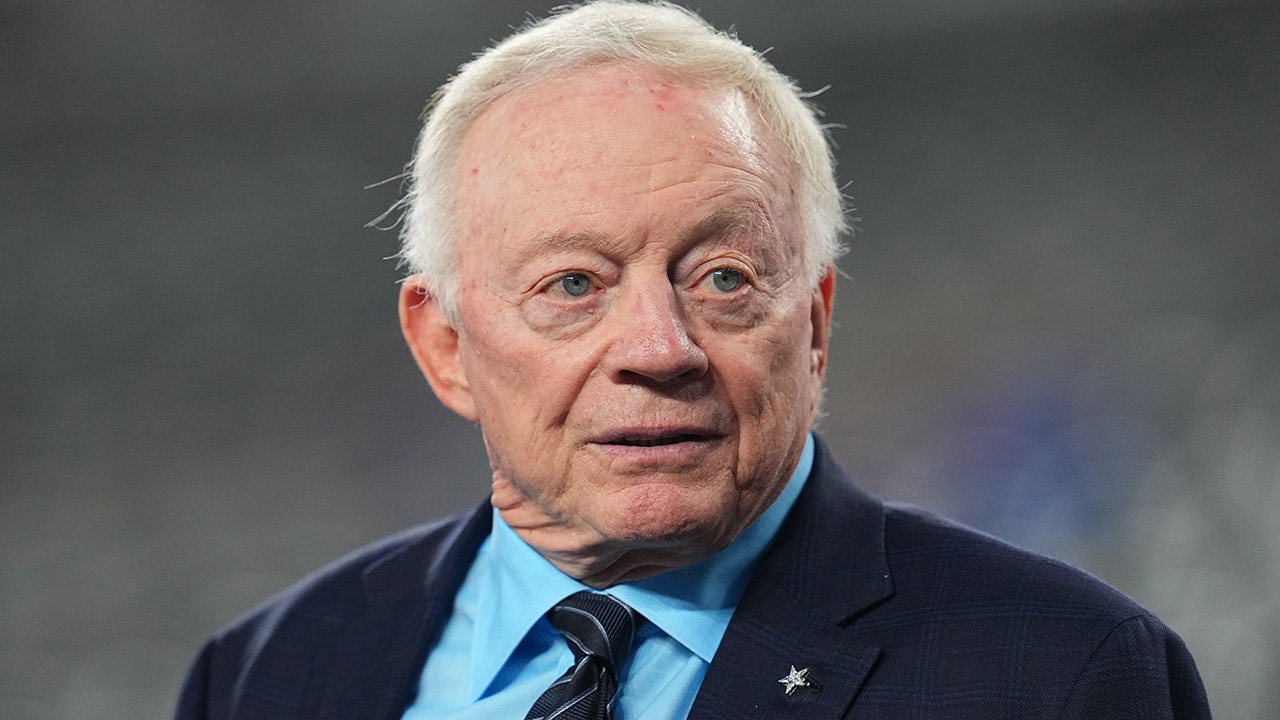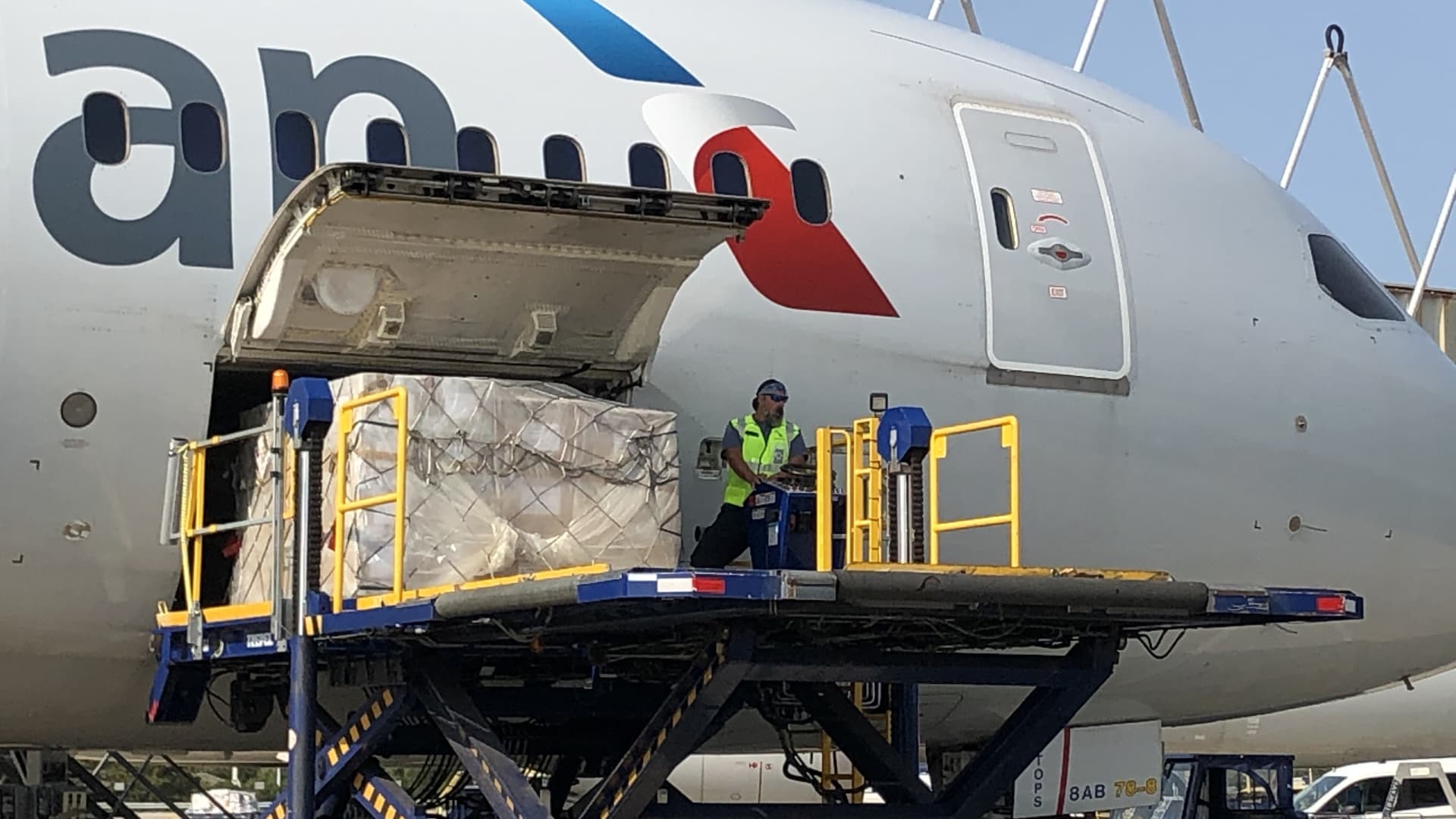An American Airlines 787 is loaded with cargo at Philadelphia International Airport.
Leslie Josephs/CNBC
More companies are warning that a surge in the cost of fuel and employee pay hikes will eat into profits this quarter.
Companies from aerospace manufacturers to package delivery giant UPS are digesting big new labor deals. Meanwhile, unions from the auto industry to Hollywood are pushing for better compensation. Airlines, whose biggest expenses are jet fuel and labor, are getting hit particularly hard.
Delta Air Lines on Thursday cut its adjusted earnings forecast for the third quarter to between $1.85 and $2.05 a share, down from an earlier forecast of $2.20 to $2.50. The carrier said it is paying more for fuel than it expected but said maintenance costs were also higher than anticipated.
U.S. jet fuel at major airports averaged $3.42 a gallon as of Tuesday, up 38% from two months ago, according to Airlines for America, an industry group.
On Wednesday, American Airlines trimmed its earnings forecast, following revisions at Alaska Airlines and Southwest Airlines. American expects adjusted earnings per share of between 20 cents and 30 cents in the third quarter, down from a previous forecast of as much as 95 cents a share, citing more expensive fuel and a new pilot labor deal.
The company expects to recognize a $230 million expense for that new contract, which includes immediate 21% raises for pilots, and compensation increasing more than 46% over the duration of the four-year contract, including 401(k) contributions.
Elsewhere, labor unions from Detroit to Hollywood have pushed hard for raises, better benefits and schedules in new contracts. UPS and the Teamsters union representing about 340,000 workers at the package carrier in July reached a new labor deal that includes raises for both full- and part-time workers, and narrowly avoided a potential strike.
UPS workers ratified the agreement last month. By the end of the five-year contract, a driver could make $170,000 in pay and benefits, the company said.
Earlier this week, the delivery giant outlined the costs associated with the deal and said the expenses derived from it will increase at 3.3% compound annual growth rate over the next five years.
“Year one costs more than we originally forecast,” said Brian Newman, the UPS finance chief, said on an investor call this week. He said it will cost $500 million more in the back half of 2023 than expected, he said.
As of midday Thursday, the United Auto Workers and Detroit automakers still appeared far apart in talks for new labor deals, setting up “likely” strategic strikes at the companies after an 11:59 p.m. ET Thursday deadline, UAW President Shawn Fain said Wednesday night. The union has sought nearly 40% hourly pay increases over new contracts as well as a reduced 32-hour workweek and other improvements.
Other unions also are seeking higher compensation. The Hollywood writers and actors strikes began in May and mid-July, respectively, with members demanding better pay to match changing industry dynamics in the entertainment-streaming era.
American Airlines offered flight attendants 11% pay increases the date a new contract starts, and 2% raises after that. But the Association of Professional Flight Attendants said the union wants 35% increases at the start of a new deal, followed by 6% annual raises.
Unions have argued that workers didn’t get raises during high inflation in recent years since the Covid pandemic derailed talks.
Strong travel demand has helped the largest carriers more than cover their higher expenses. But some carriers are seeing cracks in sales just as a slower travel period begins. Spirit Airlines on Wednesday said it expects a deeper loss than previously forecast and lower revenue.
Frontier Airlines warned Wednesday that “in recent weeks, sales have been trending below historical seasonality patterns,” and forecast an adjusted loss for the quarter.
– CNBC’s Michael Wayland and Gabriel Cortes contributed to this article.














































